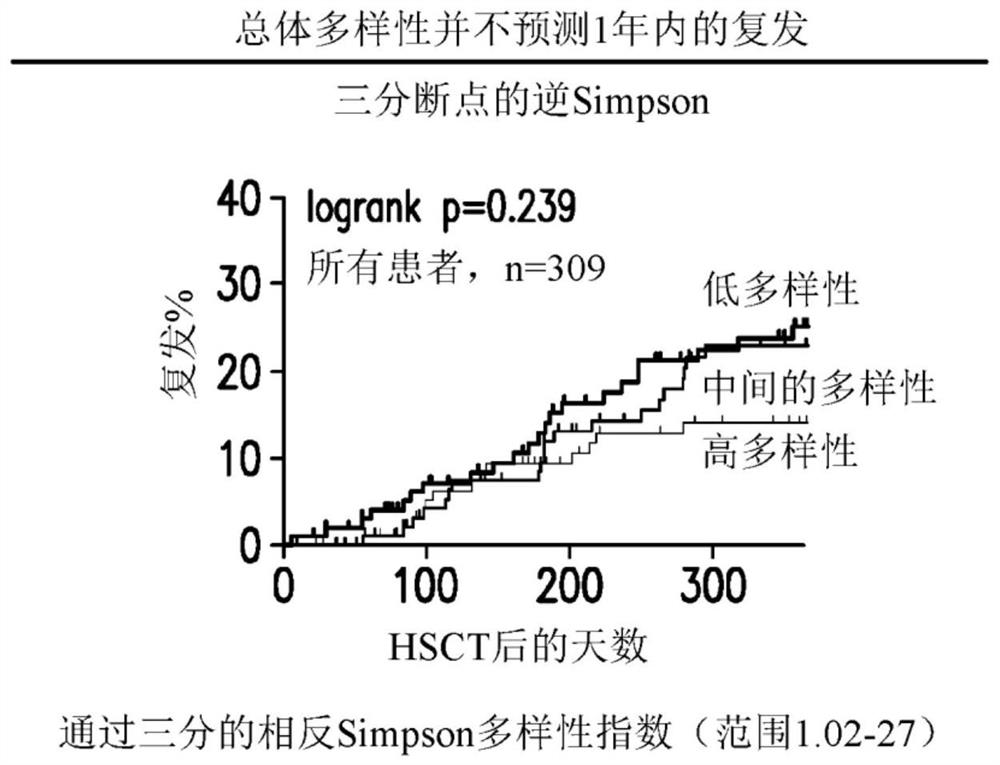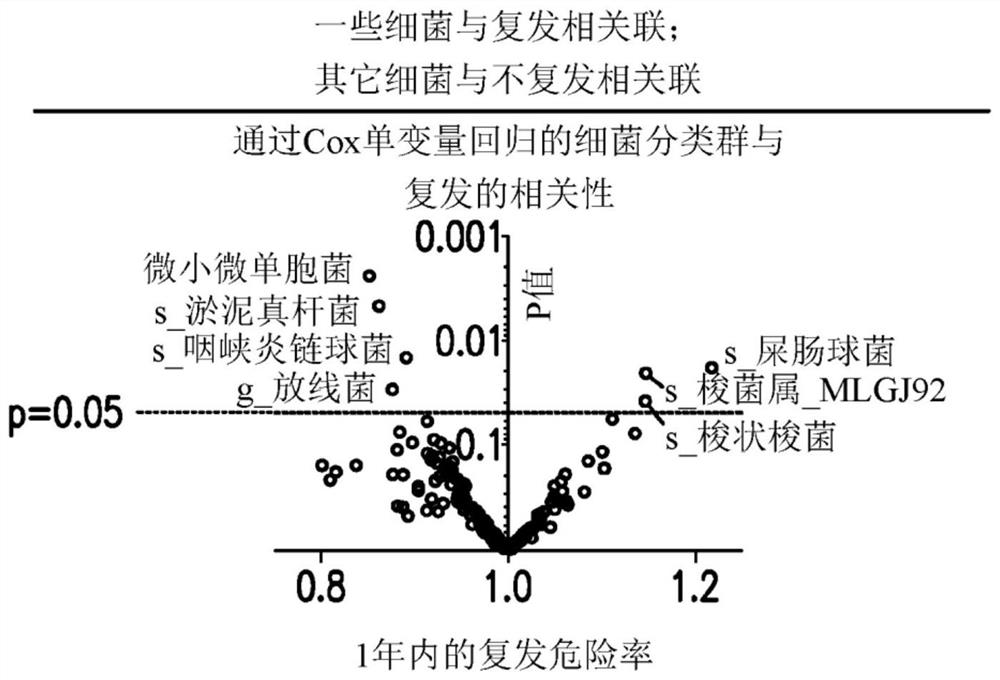Methods and compositions for detecting risk of cancer relapse
A composition, cancer technology, applied in the directions of microorganism-based methods, drug combinations, biochemical devices and methods, which can solve the problem that the role of colonization against specific pathogen resistance is not fully understood, etc.
- Summary
- Abstract
- Description
- Claims
- Application Information
AI Technical Summary
Problems solved by technology
Method used
Image
Examples
Embodiment 1
[0210] Example 1: Certain gut microbes linked to risk of cancer recurrence in cancer patients
[0211] method
[0212]In the present example, a biomarker discovery approach was applied and a retrospective observational analysis of 160 adults who received unmodified (T cell added) allografts was performed. Patients prospectively participate in a fecal biological sample collection protocol. For this analysis, we selected patients who had provided at least one sample during the first 3-week period after allo-HSCT. The major diseases in this cohort were AML (37%), non-Hodgkin's lymphoma (33%), ALL (8%), MDS (7%), CLL (6%), Hodgkin's lymphoma (6%) %), CML (2%), and myeloproliferative neoplasms (2%). The mean age of the patients was 52 years (range 21-75). It was adjusted with ablative (17%), reduced intensity (64%) and nonmyeloablative (19%) regimens. They received transplants from cord blood (46%), unrelated adults (33%), or related adults (22%). Of the adult grafts, 92%...
example 2
[0225] Example 2: Enteroaminococcus abundance in the gut microbiota of cancer patients is associated with reduced risk of cancer recurrence
[0226] method
[0227] 2,391 weekly stool samples from 613 adult cancer patients undergoing allogeneic hematopoietic stem cell transplantation (allo-HSCT) were collected over three weeks and analyzed as described in Example 1 to determine the levels of bacteria present in the samples. In this example, the V4-V5 region of the bacterial 16S rRNA gene was sequenced. Samples were collected from days 0-21 after allo-HSCT. Exclusion of 147 patients from the study allowed for analysis of a final cohort of 466 patients. The characteristics of the cohort of 466 patients are provided in Table 2. The cohort exhibited a 26% cancer recurrence rate within 36 months after allo-HSCT ( Figure 9 ).
[0228] Table 2: Cancer and Treatment in 466 Adult Patient Populations
[0229]
[0230] result
[0231] Data from these experiments further ...
example 3
[0234] Example 3: Abundance of bacterial colonies including Eubacterium militaris in gut microbiota of cancer patients is associated with reduced disease progression Linked to risk of cancer recurrence
[0235] method
[0236]Stool samples from 541 adult cancer patients undergoing allogeneic hematopoietic stem cell transplantation (allo-HSCT) were collected and sequenced using 16S ribosomal sequencing. Patients prospectively participate in a fecal biological sample collection protocol. Each patient had a sequenced sample taken within the first 21 days after allo-HSCT. The characteristics of the cohort of 541 patients are described in Table 3. During the two-year analysis period, there were 138 relapse / POD events (25.5% incidence).
[0237] Includes patients who have previously undergone autologous stem cell transplantation. Patients with non-malignant indications and those with rare diseases not classifiable by the refined disease risk index (Armand et al. Blood 2014...
PUM
 Login to View More
Login to View More Abstract
Description
Claims
Application Information
 Login to View More
Login to View More - R&D Engineer
- R&D Manager
- IP Professional
- Industry Leading Data Capabilities
- Powerful AI technology
- Patent DNA Extraction
Browse by: Latest US Patents, China's latest patents, Technical Efficacy Thesaurus, Application Domain, Technology Topic, Popular Technical Reports.
© 2024 PatSnap. All rights reserved.Legal|Privacy policy|Modern Slavery Act Transparency Statement|Sitemap|About US| Contact US: help@patsnap.com










